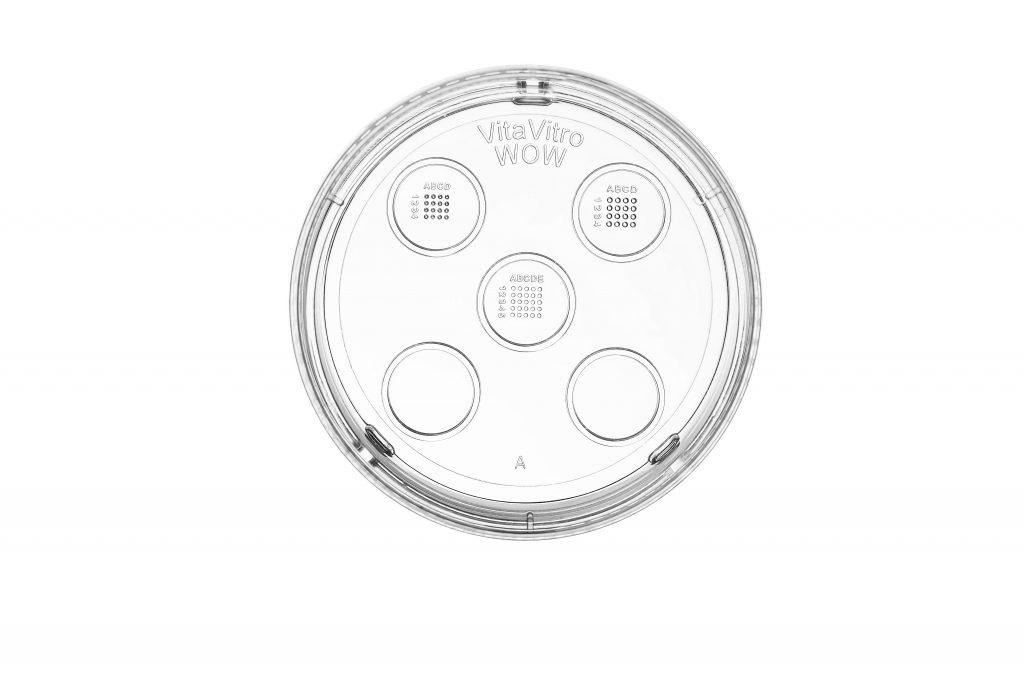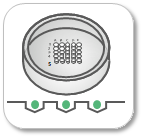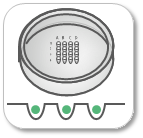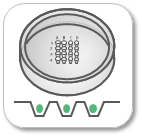The WOW (Well of the Well) micro-well culture system, first proposed by Professor Gábor Vajta, Chief Scientist at VitaVitro Biotech, is an innovative in vitro embryo culture method. It aims to simulate the microenvironment of embryonic development in vivo, thereby improving embryo development efficiency and quality.
01 The WOW Design Concept

The WOW system features tiny micro-wells at the bottom of culture dishes, addressing the issues of embryo displacement or merging that can occur in traditional droplet culture. Each micro-well can hold one or more embryos, which share the upper culture medium but remain isolated in their individual wells. This design facilitates embryo development in an environment that simulates the accumulation of autocrine growth factors.
Furthermore, the WOW system applies Fick's Second Law to precisely control the concentration of macromolecular growth factors and small molecular metabolic toxins. This precise control of concentrations helps create an ideal growth environment for embryos.
The WOW system’s unique design provides embryos with an optimal three-dimensional culture environment. The bottom of each micro-well is narrower than the opening, creating an inverted cone-like shape. This structure allows the embryo to be in closer contact with its surrounding culture environment, facilitating the exchange and concentration of autocrine factors between the embryos.
Compared to traditional two-dimensional culture systems, the WOW system better simulates the in vivo developmental environment of embryos. This microenvironment supports the absorption of nutrients from the culture medium and enhances the interaction between various factors in a co-culture system. Even in single-culture settings, the WOW system significantly improves embryo development outcomes.
Research has shown that embryos cultured in the WOW system exhibit higher cleavage rates and blastocyst formation rates. This effect has been particularly notable in bovine and porcine models, suggesting that the WOW system offers a promising alternative for culturing mammalian embryos, including human embryos.

Middile Culture Area 
Left-top Culture Area 
Right-Top Culture Area
The WOW system also improves embryo observation clarity, making it easier to conduct routine inspections and operations, and facilitating quick checks of multiple embryos in the laboratory.
02 Balancing the Advantages of Single and Co-culture
The WOW system supports both co-culture and single-culture modes. In co-culture, multiple embryos develop independently within their own micro-wells. This setup not only increases the local concentration of growth factors but also enhances overall development efficiency through embryo-to-embryo interactions. The WOW system has shown a clear advantage, particularly in terms of blastocyst formation rate and quality.
03 Dilution of Metabolic By-products
The micro-well design of the WOW system enables the accumulation of large molecular growth factors (such as bFGF, TGF, IGF, PAF, and ubiquitin) within the wells, creating high-concentration areas that promote embryo growth. Simultaneously, small molecular metabolic by-products (such as ammonium ions), due to their high diffusibility and low molecular weight, easily diffuse out of the micro-wells, effectively reducing the concentration of harmful substances inside the wells and decreasing their toxic effects on embryos.
This design not only optimises the concentration of macromolecular growth factors necessary for embryo development but also efficiently dilutes small molecular harmful metabolic products, minimising their potential harm. The WOW system has demonstrated significant advantages in increasing blastocyst rates and embryo quality, enhancing embryo interactions, and improving the chances of cultivating high-quality blastocysts with greater clinical success rates.
REFERENCE:
【1】Vajta G, Peura TT, Holm P, et al. New method for culture of zona-included or zona-free embryos: the Well of the Well (WOW) system. Mol Reprod Dev. 2000;55(3):256-264.
【2】Swain JE, Smith GD. Advances in embryo culture platforms: novel approaches to improve preimplantation embryo development through modifications of the microenvironment. Hum Reprod Update. 2011;17(4):541-557.
【3】Matsuura K. Numerical calculations for diffusion effects in the well-of-the-well culture system for mammalian embryos. Reprod Fertil Dev. 2014;26(5):742-751.
【4】Vajta G, Korösi T, Du Y, et al. The Well-of-the-Well system: an efficient approach to improve embryo development. Reprod Biomed Onlin.2008;17(1):73-81.
【5】Vajta G, Parmegiani L, Machaty Z, Chen WB, Yakovenko S. Back to the future: optimised microwell culture of individual human preimplantation stage embryos. J Assist Reprod Genet. 2021;38(10):2563-2574.
【6】Ieda S, Akai T, Sakaguchi Y, et al. A microwell culture system that allows group culture and is compatible with human single media. J Assist Reprod Genet. 2018;35(10):1869-1880.

